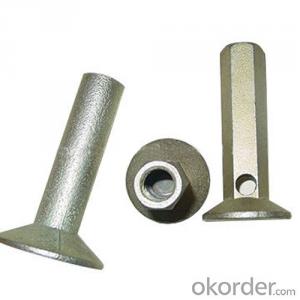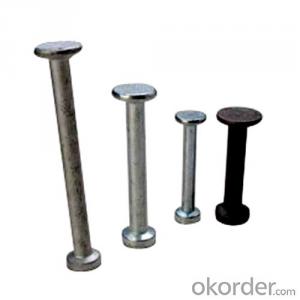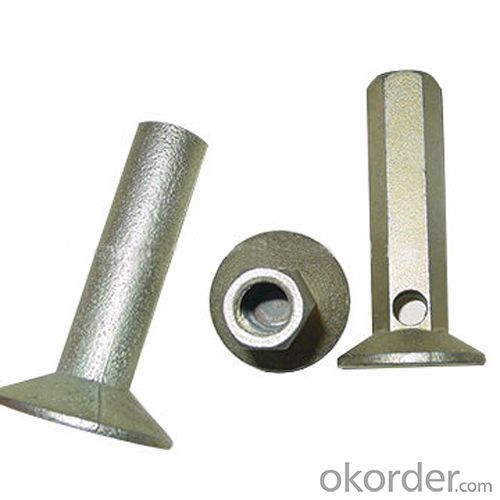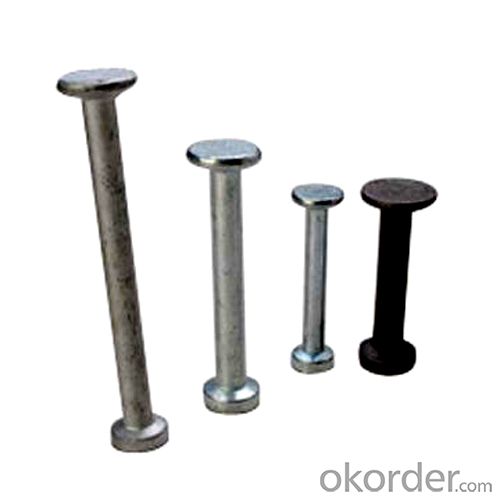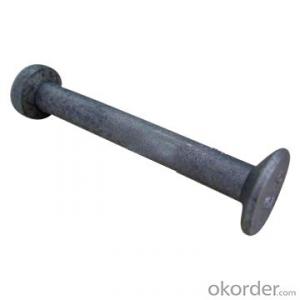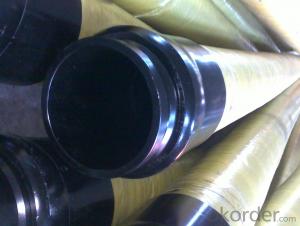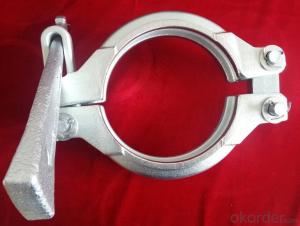Precast Concrete Lifting Spherical Head Lifting Anchor VII
- Loading Port:
- Tianjin
- Payment Terms:
- TT OR LC
- Min Order Qty:
- 100 pc
- Supply Capability:
- 10000 pc/month
OKorder Service Pledge
OKorder Financial Service
You Might Also Like
1. Specification:
1) Materials: ST52.3 or stainless steel
2) Diameter: 12mm, 17mm, 20mm, 22mm
3) Surface: plain, zinc plating, HDG
2. Products available:
Swift lift lifting eyes are used with the swift lift anchors to lift, handle and place precast concrete elements
3. Primary competitive advantages:
1. More than 10 years 4 years focus on building material manufacturing
Prompt delivery lead time within 25 days after confirming order
2. Eathu's products are enhanced by the factory QA and quality control checks during the production, if necessary each order can be send out with a certificate referring back to test
3. OEM/ODM capability: more then 10 years experience
Form A
Green Product
Guarantee/Warranty
International Approvals
Military Specifications
Packaging
Price
Product Features
Product Performance
Prompt Delivery
Quality Approvals
4.Packaging and delivery:
Packaging details: goods packed in cartons and then on the pallet
Delivery detail: within 25 days after getting payment
· Service
· Small Orders Accepted
· More than 10 Years Experience
· Testing before shipping
Market:
Mid East/Africa
North America
Western Europe
FAQ:
Q1: How long about delivery time Concrete Lifting anchors ?
A1: The delivery time will be very short, normally we keep the raw materials for old customers and sometime we also keep stock products to
make sure delivery time in any emergency cases.
Q2: How do we guarantee the quality of our Concrete lifting anchors?
A2: We have established an advanced quality management system which conducts strict quality tests at every step, from raw materials to the final product. At the same time, we provide extensive follow-up service assurances as required.
Q3: How soon can we receive the product after purchase?
A3: Within three days of placing an order, we will book the vessel for goods. The specific shipping date is dependent upon international and government factors, but is typically 7 to 30 workdays.
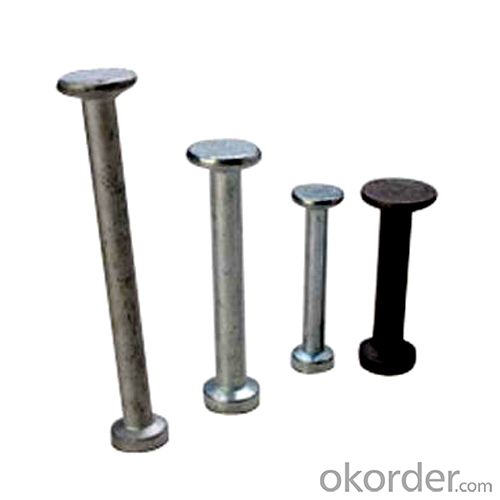
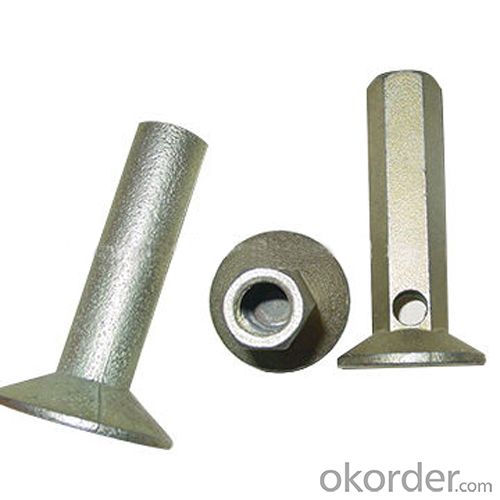
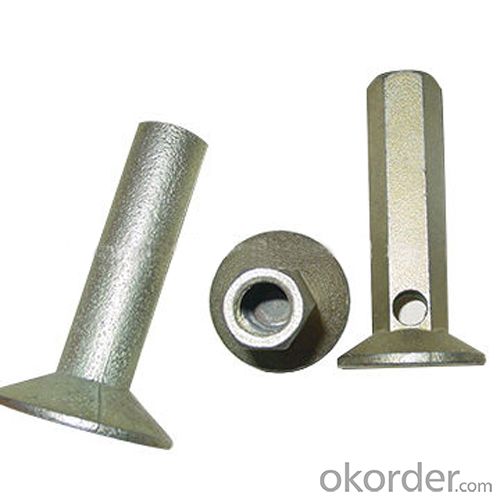
- Q: Are there any specific guidelines for the installation of pistons or cylinders in concrete pump spare parts?
- Yes, there are specific guidelines for the installation of pistons or cylinders in concrete pump spare parts. It is important to follow manufacturer instructions and recommendations for proper alignment, lubrication, and torque specifications during installation. Additionally, regular inspection and maintenance are crucial to ensure optimal performance and longevity of the pump parts.
- Q: What is the role of a concrete pump cylinder in a pumping system?
- The role of a concrete pump cylinder in a pumping system is to generate the necessary pressure and force required to transport concrete from the hopper or storage container to the desired location. The cylinder plays a crucial role in the pumping process by creating a reciprocating motion that helps in pushing the concrete through the pipeline. The concrete pump cylinder is typically connected to a piston, which moves back and forth inside the cylinder to create the pumping action. As the piston moves towards the outlet end of the cylinder, it creates a vacuum that sucks in the concrete from the hopper. When the piston moves in the opposite direction, it compresses the concrete and forces it out through the outlet valve, into the pipeline, and ultimately to the designated area. The size and design of the concrete pump cylinder depend on various factors such as the desired pumping capacity, the distance the concrete needs to be transported, and the viscosity of the concrete mix. It is essential for the cylinder to be strong and durable to withstand the high pressures and repetitive movements involved in the pumping process. In summary, the concrete pump cylinder is responsible for generating the necessary pressure and force to transport concrete efficiently and effectively. It forms the backbone of the pumping system, enabling the smooth and continuous flow of concrete from the hopper to the desired location.
- Q: What are the indications of a faulty control lever?
- There are multiple indications that may suggest a malfunctioning control lever. Firstly, if the control lever does not respond or is sluggish when attempting to engage or disengage a specific function, it could be indicative of an issue. This may include difficulties in shifting gears, adjusting speed, or operating various controls such as the throttle or clutch. Another sign of a faulty control lever is if it becomes loose or unstable. If you observe excessive play or movement in the lever, it could imply that the mechanism connecting the lever to the control system is worn out or damaged. This can compromise the accuracy and precision of the control lever, making it challenging to effectively operate the intended functions. Furthermore, any unusual noises or vibrations originating from the control lever can serve as an indication of a fault. This might be a consequence of loose or broken components within the control lever assembly, suggesting the need for inspection and repair. Lastly, if the control lever becomes stuck or jammed in a particular position, it clearly signifies a faulty lever. This can hinder proper control of the equipment or vehicle, posing safety risks. In any case, if there is suspicion of a faulty control lever, it is crucial to have it inspected and repaired by a qualified technician to ensure proper functioning and safe operation.
- Q: Are there any specific guidelines for the installation of seal kits or O-rings in concrete pump spare parts?
- Yes, there are specific guidelines for the installation of seal kits or O-rings in concrete pump spare parts. It is important to follow the manufacturer's instructions and recommendations provided with the seal kits or O-rings. The guidelines typically include steps such as cleaning and preparing the installation area, ensuring proper alignment and fit, utilizing appropriate lubrication, and applying the correct amount of torque during installation. Adhering to these guidelines helps ensure proper functioning and longevity of the concrete pump spare parts.
- Q: How often should concrete pump pistons be replaced?
- The frequency of replacing concrete pump pistons can vary depending on several factors such as the type of pump, the quality of the pistons, and the intensity of usage. However, as a general guideline, concrete pump pistons should be inspected regularly and replaced whenever signs of excessive wear or damage are observed. Timely replacement is crucial to ensure optimal pumping performance and prevent potential breakdowns.
- Q: What are the advantages of using polyurethane components in concrete pump spare parts?
- There are several advantages of using polyurethane components in concrete pump spare parts. Firstly, polyurethane is highly durable and resistant to wear and tear, ensuring longer lifespan and reduced maintenance costs. Secondly, polyurethane has excellent abrasion resistance, which allows it to withstand the harsh conditions and high pressures involved in concrete pumping. Additionally, polyurethane components offer superior flexibility, allowing for easier installation and reduced risk of breakage. Lastly, polyurethane is known for its chemical resistance, ensuring that the spare parts can withstand exposure to various chemicals and substances commonly found in concrete. Overall, using polyurethane components in concrete pump spare parts provides enhanced durability, flexibility, and resistance to abrasion, making it a preferred choice in the construction industry.
- Q: Can concrete pump spare parts be inspected for dimensional accuracy before installation?
- Certainly, before installation, it is possible to examine concrete pump spare parts to ensure their dimensional accuracy. It is crucial to verify that the spare parts meet the necessary specifications and dimensions for proper functioning and compatibility with the concrete pump system. One can perform this inspection using a range of techniques, including visual examination, precise instrument measurements, and comparing dimensions to the manufacturer's specifications. This procedure aids in detecting any disparities or deviations in the spare parts' dimensions, enabling adjustments or replacement if needed. By inspecting spare parts for dimensional accuracy prior to installation, one can guarantee the seamless operation and durability of the concrete pump system.
- Q: How often should carbide wear plates be replaced in a concrete pump?
- The replacement frequency of carbide wear plates in a concrete pump is dependent on various factors. These include the type and quality of the plates, the intensity of usage, and the specific operating conditions of the pump. Carbide wear plates are designed to withstand the abrasive nature of concrete and generally have a longer lifespan compared to traditional steel plates. However, they are not immune to deterioration and will eventually wear down over time. A good practice is to regularly inspect the wear plates and assess their condition. If there are visible cracks, excessive erosion, or a decrease in concrete flow performance, it is time to consider replacing them. Replacement intervals can vary, ranging from annual replacements to several years. To extend the lifespan of carbide wear plates, proper maintenance and care are crucial. This includes regular cleaning, ensuring proper lubrication, and avoiding excessive pressure or abuse during operation. By conducting regular maintenance, the wear plates can last longer and replacements can be less frequent. It is advisable to consult the manufacturer's guidelines or seek advice from a professional concrete pump technician to determine the specific replacement interval for carbide wear plates in a particular pump model. Their expertise and knowledge will provide accurate recommendations based on the specific conditions and usage of the concrete pump.
- Q: Can concrete pump valves be repaired or should they be replaced?
- Concrete pump valves can often be repaired instead of being replaced. The decision to repair or replace a concrete pump valve depends on the extent of the damage and the cost-effectiveness of each option. In some cases, minor issues such as clogs or leaks can be easily fixed by cleaning or replacing smaller components. However, if the valve is severely damaged or worn out, replacement may be the more practical solution. It is recommended to consult with a professional concrete pump technician to assess the condition of the valve and determine the best course of action.
- Q: Are there any warranties or guarantees on concrete pump spare parts?
- Yes, there are warranties and guarantees offered on concrete pump spare parts. Many manufacturers and suppliers provide warranties on their products to ensure the quality and performance of the spare parts. These warranties may vary in duration and coverage depending on the specific supplier or manufacturer. It is important to check with the supplier or manufacturer to understand the terms and conditions of the warranty or guarantee before purchasing the concrete pump spare parts. Additionally, some suppliers may also offer extended warranties or guarantees for an additional cost, providing further peace of mind to the customers.
Send your message to us
Precast Concrete Lifting Spherical Head Lifting Anchor VII
- Loading Port:
- Tianjin
- Payment Terms:
- TT OR LC
- Min Order Qty:
- 100 pc
- Supply Capability:
- 10000 pc/month
OKorder Service Pledge
OKorder Financial Service
Similar products
Hot products
Hot Searches
Related keywords
